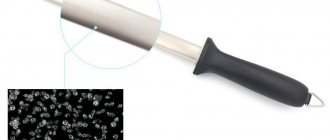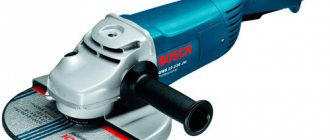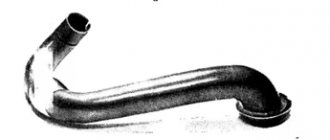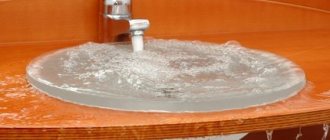Anyone who has used a magnetic screwdriver at least once knows how convenient this thing is. Magnetism helps prevent your screws from falling and getting lost. No more mysterious disappearances and missing parts! Moreover, the coolest thing about magnetism is that you don't necessarily need to buy special screwdrivers, which are more expensive than regular ones. Did you know that you can magnetize any object if it contains iron? The following will tell you how to do this.
Introduction
In order for repairs, installation and other work to proceed quickly and efficiently, nothing should interfere, especially if it is a small screw that tends to fall off the screwdriver. For convenience, you can buy a special analogue with a magnetic tip.
But don’t throw your regular screwdrivers in the trash, because you can make these out of them too. To do this, most craftsmen use magnetizers, but there are also other ways to make such a miracle screwdriver. And for this you don’t need services, everything can be done easier and faster. Read on to learn how to magnetize a screwdriver at home.
Greetings, friend!
We are glad to see you on our entertainment and educational resource.
By the way, you can share your articles with readers of the site, which we will publish in a special section - notes from our guests.>>More
Make yourself a website from a business card to an online store in half an hour! Free website builder, we recommend!
round magnet
Friends, maybe someone will find it useful.
Conducted the experiment personally.
To magnetize a screwdriver or any other steel object using a regular magnet, you just need to slide the object over a normal magnet.
I experimented with a regular large flathead screwdriver.
Place the magnet on the table and run the metal part of the screwdriver along it once, from the handle to the tip.
use a screwdriver to touch the magnet
- 10 screwdrivers with interchangeable bits from AliExpress to help the home handyman
After that, I check it on a metal screw - I bring the screwdriver to the screw, as a result it becomes very well magnetized to it.
screw on a newly magnetized screwdriver
I can’t say how long the magnetic properties of the screwdriver will remain, but it will definitely be enough for a day.
Screwdriver magnetizers
A screwdriver with a magnetic tip is, of course, good, but in some situations it can, on the contrary, interfere or even cause harm. For example, when working with electronics, a magnet can cause serious and irreparable damage to some parts.
And constantly juggling screwdrivers is quite stupid and inconvenient. Therefore, most craftsmen who often have to use a screwdriver use a special device, a magnetizer. With it you can quickly magnetize and demagnetize the tool without much manipulation.
Previously, such a service could be performed in workshops, but now, with the arrival of this device, there is no longer a question of how to magnetize a screwdriver at home.
Magnetizers are simple in design and use, which can change the corresponding parameter of metal objects. A huge advantage of the device is that it does not require additional connection to the network or recharging. And the small dimensions allow you to always have such a useful thing with you. And if we consider the design itself, the magnetizer consists of:
- polymer case with slots for metal objects;
- a set of magnets of different polarities.
Each of these holes is responsible for one or another function, magnetization, demagnetization. Usually, the slots are labeled, but even otherwise, you can very quickly check the parameters of each compartment.
The principle of operation is incredibly simple: place the object in the desired hole, wait a little. These devices differ in the size of the instrument itself and the size of the incision. The second parameter depends on how large the object needs to be magnetized.
They do not vary much in price, the usual price per piece varies from 100 to 400 rubles, although more expensive models can be found. Whether they are worth the money is up to everyone to decide.
Methods for demagnetizing metal
There are several ways to demagnetize metal structures. Devices are used depending on the frequency of use, purpose and power. Before you demagnetize metal at home, you need to understand the existing structures.
- An ordinary magnet is large in size; a tool is held over it at a minimum distance, on the verge of the attraction process. The magnet can be removed from an old speaker, most of which are round in shape. The process is carried out when the product is removed from the structure, loosening it; the further the tool is from the structure, the smaller the amplitude. The location of the axis on which there is no magnetic field depends on the design of the product.
- More frequent use will require a device operated at home from the mains. It is possible to make the device at home or purchase it at radio parts stores. The main component is a coil of wound wire connected to a transformer. The supply of alternating current allows you to demagnetize the element, direct current - vice versa.
Removing magnetization with a magnetometer
There are many variations and kits for demagnetizing metals in production.
Tunnel devices include a coil having an opening connected to a network.
The size of the hole can be different, depending on the purpose and dimensions of the parts being processed. Multi-band magnets driven by motion, rotation of which occurs with speed control, the impact and change in amplitude is carried out by moving the part away from the body.
Electromagnets operate from a 220 or 380 volt network and allow you to demagnetize an element with a tap for a certain time. Container mechanisms allow you to install the product to a device in which the necessary environment is automatically created.
How to magnetize a screwdriver without a magnetizer
As in the case of a special screwdriver, a magnetizer can become unnecessary and an unjustified waste of money and time. This is especially true in cases where the need for a magnetized screwdriver is extremely rare.
And then there is a need to find a handy way to solve the problem. There are several methods on how to magnetize a screwdriver at home without using the device described above:
- Using a powerful magnet. If there is such an item, then you can bring the instrument to the desired state in a few minutes. You need to move the screwdriver from the tip to the middle with a magnet. If you always need such a tool, then after work you can leave it on the magnet.
- Using an improvised reel. In cases where there is no good magnet, and you need a screwdriver right now, you can make the missing item yourself. To do this, you need to wrap a metal object with paper and varnished copper wire.
For a good result, the wire will need a lot, two to four hundred turns around the selected object. The result is a coil to which voltage must be applied. To do this, you can use a battery, batteries, charger, and so on.
- Through the voltage of the household, general power supply network. The same coil is also used here, only the voltage is supplied from the outlet. An important difference is the presence of a fuse that can protect against short circuits. You should be especially careful, because when connected, the fuse will burn out.
Each of these methods should be done following safety rules, otherwise it can cause harm to health. It is best if you do not have the appropriate skills or knowledge to seek help or advice from a person knowledgeable in this area.
Otherwise, each of these methods will be able to magnetize any metal object. The cheapness of each method should be considered individually, based on the availability of the necessary components.
Video on how to magnetize and demagnetize a tool without special equipment
How to make a demagnetization device at home
It is possible to make an electromagnet for demagnetization at home; for this you will need some materials and available tools. Operation occurs by controlling the current; constant voltage can magnetize the element, while alternating voltage, on the contrary, produces action.
Homemade device for demagnetizing metals
The coil can be made from parts of an old TV, or rather the demagnetization loop of a kinescope. It is important to maintain consistency during manufacturing for a correct process.
- The loop is folded several times until the coil reaches the required diameter. If one loop is not enough, you can sequentially add a second one; this design will allow you to work with large elements.
- A fuse and a button are connected for normal, uninterrupted operation.
- Designs for 220 Volts can be used constantly, those designed for 110 V are connected for a short time, 12 V are used through a transformer.
Installation for demagnetization from a transformer
The resulting mechanism is perfect for large parts. When working with small devices, you can prepare a mini kit at home. For operation, any coil is used, for example from an old reel-to-reel player, connected in series with a transformer. Use occurs by applying voltage, the part is placed near the mechanism, then removed, while the power of the device remains on.
If you find an error, please select a piece of text and press Ctrl+Enter.
For many people, a magnet is still a mystery, although in principle people became acquainted with this metal and phenomenon a very long time ago. Even then, a whole system for the production of various magnets was developed. Today this is far from uncommon, and even powerful magnets can be made at home.
Making a magnet using improvised materials
Of course, for many this will even seem like something supernatural and may even be a shock, but even now, sitting at home, most people can make a magnet with their own hands. Below are four methods that describe how to make a powerful magnet at home.
The first and probably therefore the simplest method: to implement it, you just need to take any object that can be magnetized (the object must be metal) and move it several times along a permanent magnet, and this should be done only in one direction. But, unfortunately, such a magnet will be short-lived and will very quickly lose its magnetic properties.
This magnetization method is performed using a 5 or 12 volt battery or accumulator. Most often it is used for magnetizing screwdrivers and is performed as follows:
• A copper wire of a certain length is taken, which will be enough to wrap the screwdriver shaft 280 - 350 times. The wire from transformers, or the one intended for their production, is best suited. • The object is insulated; in this case, the entire shaft of the screwdriver is wrapped using electrical tape. • The winding itself is carried out and connected to the battery. One end is to the plus, the other to the minus. The winding should be carried out turn to turn, evenly. The insulation must also be tight.
As a result of these manipulations, it will be much more pleasant to work with a screwdriver. This operation can turn any old unnecessary screwdrivers into a truly convenient tool.
This option describes how to make a powerful magnet in a fairly simple way. In fact, it has already been fully described above, but this particular method involves a different material. In this case, ordinary metal will be used, or rather a small piece of it, preferably cubic in shape, and a more powerful coil. Now the number of turns needs to be increased 2-3 times for magnetization to be successful.
This method is very dangerous and is strictly prohibited for use by people who are not electrical professionals. It is carried out strictly in compliance with safety precautions, the main thing is to remember that only you and no one else bears responsibility for life and health.
He talks about how to make a strong magnet at home, while spending a small amount of money. In this case, an even more powerful coil, wound exclusively from copper, will be used, as well as a fuse for a 220-volt network.
The fuse is needed so that the coil can be turned off in time. Immediately after connecting to the network, it will burn out, but during this period of time it will have time to go through the magnetization process. The current strength in this case will be maximum for the network and the magnet will be quite powerful.
DIY powerful electromagnet
First, you need to figure out what it is. An electromagnet is a whole device that, when a certain current is supplied to it, works like a regular magnet. Immediately after cessation, it loses these properties. How to make a powerful magnet from an ordinary coil and iron was described above. So, if you use a magnetic circuit instead of iron, then you will get exactly the same electromagnet.
Methods for demagnetizing metal
There are several ways to demagnetize metal structures. Devices are used depending on the frequency of use, purpose and power. Before you demagnetize metal at home, you need to understand the existing structures.
- An ordinary magnet is large in size; a tool is held over it at a minimum distance, on the verge of the attraction process. The magnet can be removed from an old speaker, most of which are round in shape. The process is carried out when the product is removed from the structure, loosening it; the further the tool is from the structure, the smaller the amplitude. The location of the axis on which there is no magnetic field depends on the design of the product.
- More frequent use will require a device operated at home from the mains. It is possible to make the device at home or purchase it at radio parts stores. The main component is a coil of wound wire connected to a transformer. The supply of alternating current allows you to demagnetize the element, direct current - vice versa.
Removing magnetization with a magnetometer
There are many variations and kits for demagnetizing metals in production.
Tunnel devices include a coil having an opening connected to a network.
The size of the hole can be different, depending on the purpose and dimensions of the parts being processed. Multi-band magnets driven by motion, rotation of which occurs with speed control, the impact and change in amplitude is carried out by moving the part away from the body.
Electromagnets operate from a 220 or 380 volt network and allow you to demagnetize an element with a tap for a certain time. Container mechanisms allow you to install the product to a device in which the necessary environment is automatically created.
How to make a demagnetization device at home
It is possible to make an electromagnet for demagnetization at home; for this you will need some materials and available tools. Operation occurs by controlling the current; constant voltage can magnetize the element, while alternating voltage, on the contrary, produces action.
Homemade device for demagnetizing metals
The coil can be made from parts of an old TV, or rather the demagnetization loop of a kinescope. It is important to maintain consistency during manufacturing for a correct process.
- The loop is folded several times until the coil reaches the required diameter. If one loop is not enough, you can sequentially add a second one; this design will allow you to work with large elements.
- A fuse and a button are connected for normal, uninterrupted operation.
- Designs for 220 Volts can be used constantly, those designed for 110 V are connected for a short time, 12 V are used through a transformer.
Installation for demagnetization from a transformer
The resulting mechanism is perfect for large parts. When working with small devices, you can prepare a mini kit at home. For operation, any coil is used, for example from an old reel-to-reel player, connected in series with a transformer. Use occurs by applying voltage, the part is placed near the mechanism, then removed, while the power of the device remains on.
Source










